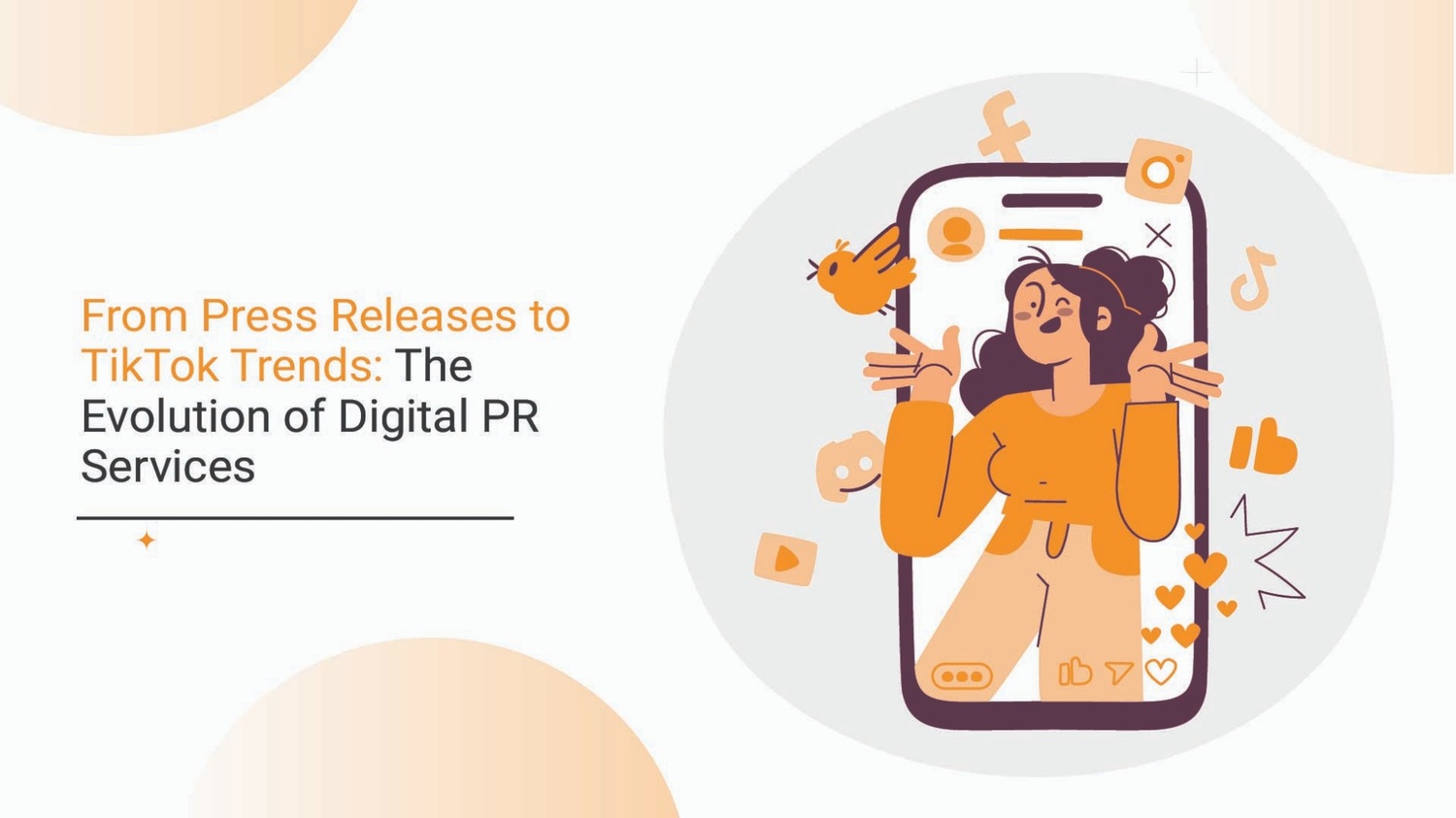

content marketing marketing
From Press Releases to TikTok Trends: The Evolution of Digital PR Services
From Press Releases to TikTok Trends: The Evolution of Digital PR Services
Public relations has undergone a profound transformation in recent years. Traditional tactics such as press releases, media briefings, and print coverage, once considered the backbone of PR, now share the stage with a host of digital-first strategies. Today’s audiences engage with brands across multiple online channels, often before encountering a product in any physical space. This shift requires a new approach where PR and marketing are seamlessly integrated, ensuring that messaging resonates across every touchpoint while maintaining credibility and trust.
The Rise of Digital PR
Modern digital PR extends beyond securing media mentions. It leverages online content, influencer partnerships, social campaigns, and multimedia storytelling to build awareness and strengthen brand reputation. Digital PR emphasizes audience engagement, offering measurable insights that allow teams to refine campaigns in real time. By creating consistent narratives across blogs, social platforms, and press outlets, brands can establish themselves as reliable voices in their industries, enhancing both visibility and influence.
Connecting PR with Marketing
The intersection of PR and digital marketing is increasingly important in shaping consumer perception. While marketing drives attention through targeted campaigns and advertisements, PR adds a layer of authenticity that transforms awareness into trust. Coordinated efforts ensure that messaging is consistent across paid, owned, and earned channels, maximizing reach and impact. This synergy enables brands to engage audiences more meaningfully, encouraging not just initial interest but sustained loyalty over time.
Optimizing Visibility with SEO
Search engine visibility is now a critical element of any PR strategy. Integrating SEO into digital PR ensures that content is discoverable by relevant audiences and enhances brand authority online. Thought leadership articles, campaign announcements, and multimedia content that are optimized for search can generate organic reach, drive traffic to company platforms, and position brands as trusted industry leaders. Leveraging SEO insights also allows teams to track engagement, measure success, and fine-tune strategies for ongoing impact.
Adapting to Social Trends
Social media platforms such as TikTok, Instagram, and LinkedIn have redefined storytelling. To thrive in this environment, PR must be agile, creative, and audience-focused. Short-form videos, interactive campaigns, and live content provide opportunities for authentic engagement, while also enabling brands to respond rapidly to trends and feedback. The ability to translate traditional PR expertise into dynamic, platform-specific content is essential for capturing attention and cultivating lasting connections with consumers.
Measuring Success in Real Time
The digital age has brought precision to measuring PR outcomes. Beyond traditional media coverage, performance is now evaluated through engagement metrics, social sharing, sentiment analysis, and website traffic. These insights inform decision-making, allowing teams to adjust campaigns, anticipate audience preferences, and optimize results. By adopting a data-driven approach, PR and marketing professionals can demonstrate measurable value, strengthen credibility, and enhance the overall effectiveness of brand communications.
Looking Forward
PR will continue to evolve alongside technology, platforms, and consumer expectations. From press releases to TikTok trends, success now depends on integrating PR, digital PR, marketing, and SEO into cohesive strategies. Brands that embrace innovation while maintaining transparency and authenticity are best positioned to build trust, drive engagement, and sustain long-term growth. In an era of rapid information exchange, the future of PR is interactive, integrated, and intrinsically linked with digital marketing, offering a blueprint for meaningful connections and enduring brand influence.

Ronn Torossian




